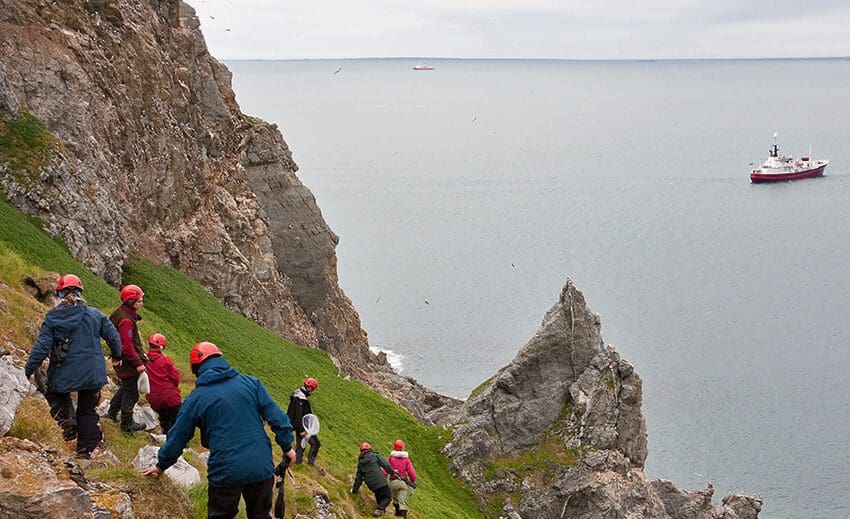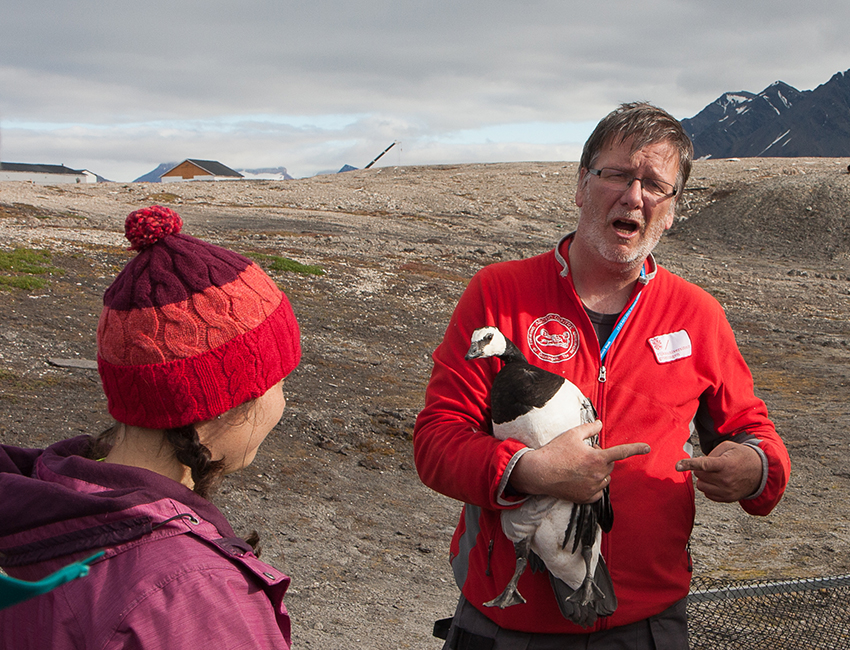AB-204 Arctic Population Ecology (15 ECTS)
ID:
AB-204
CREDITS:
15 ECTS
APPLICATION DEADLINE:
April 15, 2024
START DATE:
July 29, 2024
END DATE:
December 13, 2024

| Grade: | Letter grade (A through F) |
| Course Cost: | Fieldwork, NOK 400 (2 days x NOK 200 per overnight stay). Daily field excursions in the vicinity of Longyearbyen come at no cost for the students. |
| Course Capacity Min/Max: | 10/20 students |
| Language of instruction: | English |
| Examination support material: | Bilingual dictionary between English and mother tongue |
Course requirements
60 ECTS within general natural sciences, of which 30 ECTS within the field of biology. The applicant must be enrolled in a programme at Bachelor level, or document that the courses are approved into the applicant’s current study programme.
Knowledge of the statistical software package R will be advantageous.
The course should be combined with AB-201 Terrestrial Arctic Biology (15 ECTS), as the two courses are designed to complement each other.
Academic content
Academic content:
The course deals with how the Arctic environment and individual interactions shape ecological processes. A common ecological conceptual setting will be established as a baseline for our Arctic case studies. Cases include both marine and terrestrial species and taxa. Effects of climatic variability will be studied within and between species as well as across trophic levels, including discussions of how individual phenology, life histories and populations are impacted. Field studies and excursions will help students learn about ecological interactions, field methods, and ongoing research projects, providing the students with hands-on field experiences and insights into various study designs. Computer labs will complement the field- and literature-based studies, focusing on time series analysis in the context of population dynamics.
The course runs in parallel with AB-201 and the two courses are designed to complement each other. AB-201 has substantial data and field-based research projects, with a focus on species and habitat knowledge. AB-204 provides a deeper insight into the theoretical background of Arctic population ecology and focuses more on showcasing different study designs, literature studies, and analyses of existing population time series. Students are expected to study both courses, which will kick-off together with a joint field week.
Learning outcomes
Upon completing the course, the students can:
Knowledge
- define, discuss and contrast key elements of the population ecology of Arctic organisms, including species interactions within populations and across throphic levels
- list, classify, compare and evaluate how the combination of density-dependence and climatic factors impact populations and trophic interactions in the Arctic
- use and contrast observations and models to evaluate how biotic and abiotic processes influence the dynamics of species phenology and life histories, population development and community structures.
Skills
- perform simple visualisations and analyses of population time series dynamics, using the statistical programme R
- understand and contrast different methods for monitoring population dynamics
- design and present a poster based upon own analyses of publicly available long-term monitoring time series of Arctic populations
- navigate and search the research literature on Arctic population ecology
General competences
- perform fieldwork to study selected Arctic species and their communities and to understand different field methods in population ecology
- critically evaluate, present and discuss scientific methods, findings, and literature within Arctic population ecology
- present own work through poster and oral presentations, i.e., communicate scientific findings to a scientific audience
- understand and be able to discuss the relevance of conceptual population ecology in field-based scientific studies in Arctic ecology
Learning activities
The course extends over a full semester. Initially, students attend two days of compulsory Arctic survival and safety training. AB-204 and AB-201 will start with a joint field week in August.
Lectures, seminars, group assignments, student presentations, poster design and presentation as well as fieldwork constitute the learning activities of AB204. Lectures will provide the students with basic, conceptual knowledge and comprehension of Arctic population ecology, whereas fieldwork will give students hands-on experience in collecting data across Arctic habitats. Group assignments as well as student presentations of poster and scientific literature are designed to activate students through the application, analysis and synthesis of research papers within Arctic population ecology.
Summary
- Total lecture hours: ca. 30 hours.
- Total statistical and seminar hours: ca. 35 hours.
- Computer lab work: ca. 20 hours.
- Field excursions: 5 days.
Compulsory learning activities
- Seminars
- Statistical exercises in R
- Group assignments
- Student presentations
- Field work
Assessment
- All assessments must be passed in order to pass the course.
- Each assessment is graded, and subsequently combined into a single grade. Partial grades for each assessment will be available.
| Method | Duration |
Percentage of final grade
|
| Design and oral presentation of poster | 1 week |
30%
|
| Written exam | 4 hours |
70%
|


